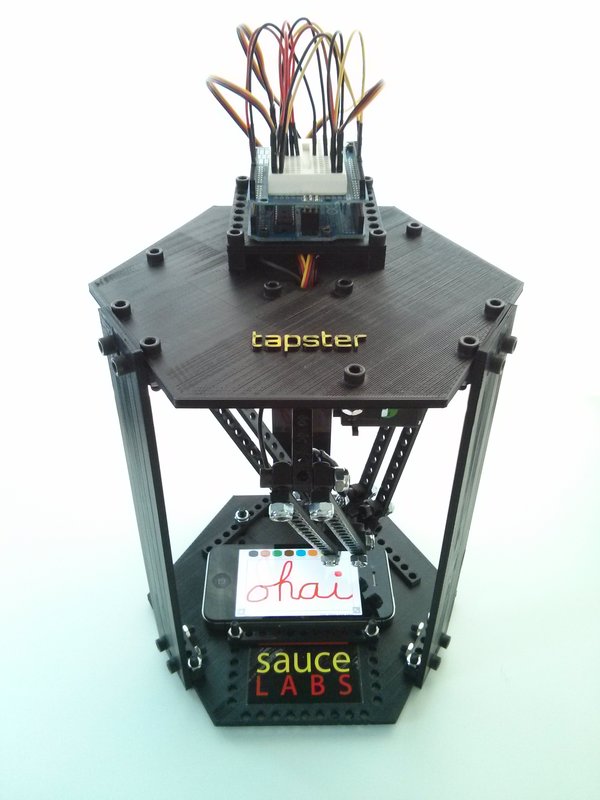Everyone knows that mobile testing is a new trend. Thus, there is huge need to automate mobile testing. We have many tools available for mobile test automation such as Appium, Selendroid, MonkeyTalk etc. These are software tools which can be used for mobile test automation. But how about mobile test automation using hardware? Is it possible? Yes, it is. Enter Tapsterbot, a robot for automating applications on mobile devices.
Tapsterbot has a finger! Essentially an iPad stylus, which it uses on capacitive touchscreens. Other parts of this robot is built using Bitbeam, an open-source 3D printable LEGO-Technic compatible building system. Check out details of Tapsterbot below.
- Open source hardware (BSD License)
- 3D printable
- Programmed with Node.js + Johnny-Five + Arduino
- Selenium WebDriver and Appium compatible
- Designed by the creator of Selenium, the popular browser automation tool
- USB powered (5V)
- Tappable area is 140mm x 80mm (Ideal for Nexus 4, iPhone 4, or iPhone 5)
Below is how it looks like.

Selenium and Appium are the base software and framework for testing. For more flexibility and as an alternative a camera can be mounted. It also makes use of installed OpenCV framework to compare the screenshot and determine if the test is passed or failed.
Checkout this video to see it in action. Playing Angry Birds on a mobile device.
Comments
Post a Comment